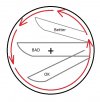- Joined
- Oct 10, 2018
- Messages
- 455
Hello all. After researching on the forums here about their merits and seeing that I can get a disc from USA knifemaker for ~100 bucks, I am ready to pull the trigger on a disc grinder build.
But the million dollar question is, do I need a beveled disc or a flat disc? I want to make finishing the flats of my fixed blade hunting knives easier and higher quality than using my flat platen (leaves scratches on edges that I can't get out because of belt curl). The blades are about 4.5" long with a roughly 5" tang. I am also interested in tapering tangs on my belt grinder and flattening on the disc, as I have been unsatisfied with the flatness of the tang coming off the belt. If it factors in to the choice, I do not foresee myself making folding knives.
Thanks everyone for your consideration.
But the million dollar question is, do I need a beveled disc or a flat disc? I want to make finishing the flats of my fixed blade hunting knives easier and higher quality than using my flat platen (leaves scratches on edges that I can't get out because of belt curl). The blades are about 4.5" long with a roughly 5" tang. I am also interested in tapering tangs on my belt grinder and flattening on the disc, as I have been unsatisfied with the flatness of the tang coming off the belt. If it factors in to the choice, I do not foresee myself making folding knives.
Thanks everyone for your consideration.


